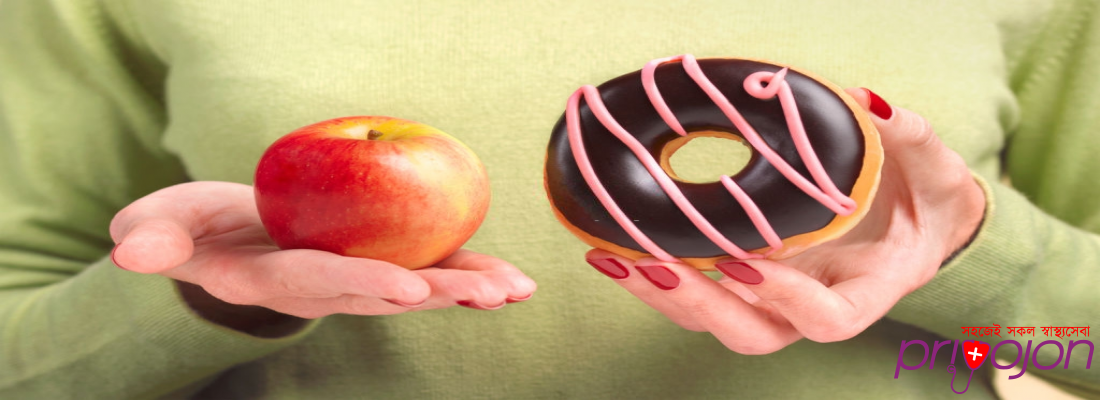Shared on 06-04-2020
Why Cholesterol Matters for Women
Why Cholesterol Matters for Women

Ah, cholesterol and triglycerides. We hear about them all the time. Even foods that might seem good for you on the surface, like fruit-filled yogurt or bran muffins, can contribute to abnormal levels if they contain too much saturated fat or refined sugar, says Erin Michos, M.D., associate director of preventive cardiology at the Ciccarone Center for the Prevention of Heart Disease.
What’s more, many women are at risk for high cholesterol and don’t realize it. “Approximately 45 percent of women over the age of 20 have a total cholesterol of 200 mg/dl and above, which is considered elevated — but a survey by the American Heart Association found that 76 percent of women say they don’t even know what their cholesterol values are,” Michos says.
Scarier still: Triglycerides, a type of blood fat typically measured alongside cholesterol, are even more risky in women compared with men. This is a problem because women’s cholesterol levels can fluctuate quite a bit after menopause and tend to increase with age, putting us at greater risk of heart disease and stroke. Knowing your cholesterol numbers and how to control them is a big step toward staying healthy.
Understanding the Highs and Lows of Cholesterol
You know that too much is dangerous. But what is cholesterol, anyway? Where does it come from? And is it all bad?
Cholesterol is a waxy substance that is found in every cell in the body. It’s either made by the body or absorbed from food. Your body needs cholesterol to make important steroid hormones such as estrogen, progesterone and vitamin D. It’s also used to make bile acids in the liver; these absorb fat during digestion.
So some cholesterol is necessary. Problem is, you can have too much of a good thing. Excess cholesterol in the bloodstream can deposit into the body’s arteries. These deposits are called plaques and result in atherosclerosis, or hardening of the arteries. This is the major cause of heart attacks, strokes and other vascular problems.
Your total cholesterol level is a measure of the total amount of cholesterol circulating in your bloodstream, which includes two major components:
- LDL cholesterol: LDL stands for “low-density lipoprotein.” This is known as the “bad” cholesterol, which directly contributes to plaque buildup in the arteries.
- HDL cholesterol: HDL stands for “high-density lipoprotein.” It has been called “good” cholesterol because experts think it might help the body get rid of LDL cholesterol.
So bits of this stuff circulate through your system, and here’s what happens: The bad parts – the LDL particles – like to stick to the lining of your arteries, like soap scum in pipes. As it sticks there, it generates an inflammatory response and your body starts converting it into plaque. Plaque in your blood vessels makes them stiffer and narrower, restricting blood flow to vital organs such as your brain and heart muscle, leading to high blood pressure. Additionally, chunks can break off and cause a heart attack or a stroke. And guess what? This buildup can start as early as your 20s.
What to Know About Triglycerides
In addition to cholesterol, you might hear your doctor mention triglycerides, another kind of fat found in the bloodstream. Women should pay particular attention to this. “A high level of triglycerides seems to predict an even greater risk for heart disease in women compared with men,” says Michos.
When you take in more calories than you need, your body converts the extra calories into triglycerides, which are then stored in fat cells. Triglycerides are used by the body for energy, but excess triglycerides increase the risk of heart disease. Drinking a lot of alcohol and eating foods containing simple carbohydrates (sugary and starchy foods), saturated fats and trans fats contributes to high triglycerides. High levels may also be caused by health conditions such as diabetes, an underactive thyroid, obesity, polycystic ovary syndrome or kidney disease.
Triglycerides also circulate in the bloodstream and contribute to plaque formation. Many people with high triglycerides have other risk factors for atherosclerosis, including high LDL levels or low HDL levels, or abnormal blood sugar (glucose) levels. Genetic studies have also shown some association between triglycerides and cardiovascular disease.
Ah, cholesterol and triglycerides. We hear about them all the time. Even foods that might seem good for you on the surface, like fruit-filled yogurt or bran muffins, can contribute to abnormal levels if they contain too much saturated fat or refined sugar, says Erin Michos, M.D., associate director of preventive cardiology at the Ciccarone Center for the Prevention of Heart Disease.
What’s more, many women are at risk for high cholesterol and don’t realize it. “Approximately 45 percent of women over the age of 20 have a total cholesterol of 200 mg/dl and above, which is considered elevated — but a survey by the American Heart Association found that 76 percent of women say they don’t even know what their cholesterol values are,” Michos says.
Scarier still: Triglycerides, a type of blood fat typically measured alongside cholesterol, are even more risky in women compared with men. This is a problem because women’s cholesterol levels can fluctuate quite a bit after menopause and tend to increase with age, putting us at greater risk of heart disease and stroke. Knowing your cholesterol numbers and how to control them is a big step toward staying healthy.
Understanding the Highs and Lows of Cholesterol
You know that too much is dangerous. But what is cholesterol, anyway? Where does it come from? And is it all bad?
Cholesterol is a waxy substance that is found in every cell in the body. It’s either made by the body or absorbed from food. Your body needs cholesterol to make important steroid hormones such as estrogen, progesterone and vitamin D. It’s also used to make bile acids in the liver; these absorb fat during digestion.
So some cholesterol is necessary. Problem is, you can have too much of a good thing. Excess cholesterol in the bloodstream can deposit into the body’s arteries. These deposits are called plaques and result in atherosclerosis, or hardening of the arteries. This is the major cause of heart attacks, strokes and other vascular problems.
Your total cholesterol level is a measure of the total amount of cholesterol circulating in your bloodstream, which includes two major components:
- LDL cholesterol: LDL stands for “low-density lipoprotein.” This is known as the “bad” cholesterol, which directly contributes to plaque buildup in the arteries.
- HDL cholesterol: HDL stands for “high-density lipoprotein.” It has been called “good” cholesterol because experts think it might help the body get rid of LDL cholesterol.
So bits of this stuff circulate through your system, and here’s what happens: The bad parts – the LDL particles – like to stick to the lining of your arteries, like soap scum in pipes. As it sticks there, it generates an inflammatory response and your body starts converting it into plaque. Plaque in your blood vessels makes them stiffer and narrower, restricting blood flow to vital organs such as your brain and heart muscle, leading to high blood pressure. Additionally, chunks can break off and cause a heart attack or a stroke. And guess what? This buildup can start as early as your 20s.
What to Know About Triglycerides
In addition to cholesterol, you might hear your doctor mention triglycerides, another kind of fat found in the bloodstream. Women should pay particular attention to this. “A high level of triglycerides seems to predict an even greater risk for heart disease in women compared with men,” says Michos.
When you take in more calories than you need, your body converts the extra calories into triglycerides, which are then stored in fat cells. Triglycerides are used by the body for energy, but excess triglycerides increase the risk of heart disease. Drinking a lot of alcohol and eating foods containing simple carbohydrates (sugary and starchy foods), saturated fats and trans fats contributes to high triglycerides. High levels may also be caused by health conditions such as diabetes, an underactive thyroid, obesity, polycystic ovary syndrome or kidney disease.
Triglycerides also circulate in the bloodstream and contribute to plaque formation. Many people with high triglycerides have other risk factors for atherosclerosis, including high LDL levels or low HDL levels, or abnormal blood sugar (glucose) levels. Genetic studies have also shown some association between triglycerides and cardiovascular disease.
Popular Health Tips
Ah, cholesterol and triglycerides. We hear about them all the time. Even foods that might seem good for you on the surface, like fruit-filled yogur...
The National Women's Health Information Center offers the following 10 things you can do to help live longer, live better, and live happier:
No woman looks forward to “that time of the month.” M...
What is Women’s Health?
The health problems of both men and women are nearly the same except for some gynecologica...
A recent study claims that environmental pollution may be a leading cause of infertility in many couples. In the ‘Environmental Hea...
Most women are in tune with the frequency of their menstrual cycl...
Medically reviewed by
Mrs Dr. Sabiha Islam
MBBS, FCPS (Gynae & Obs), 2012, BCPS
10 Years of Experience
- Written by the Priyojon Editorial Team





